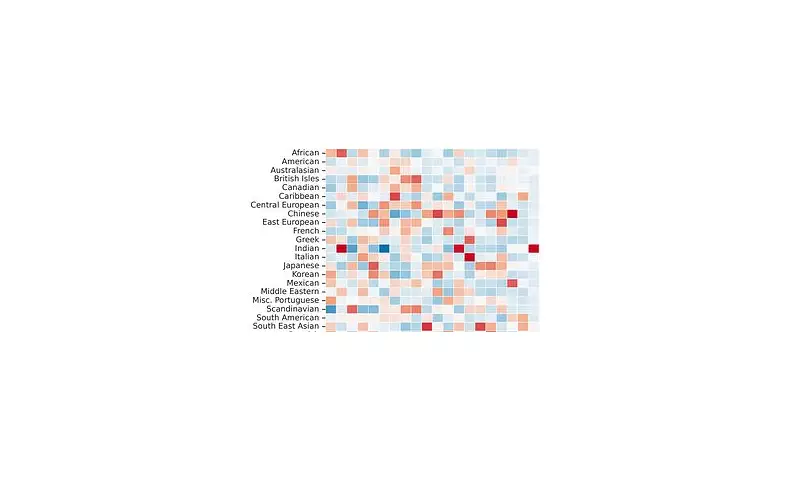
In the long-standing culinary debate over whether British or American food tastes superior, a new scientific study has delivered a significant verdict. Research reveals that American cuisine typically incorporates a broader range of ingredients, marking a notable contrast with British food traditions.
The Global Flavour Map
Scientists conducted an extensive analysis of a dataset containing 45,661 recipes from 23 global cuisines. These recipes, which included everything from British and American to Thai and Eastern European, were broken down into 604 ingredients across 20 distinct categories such as spices, herbs, meat, and dairy.
Study author Professor Iacopo Iacopini, an Italian academic at Northeastern University in Massachusetts, explained that distinct 'ingredient fingerprints' emerge for each food tradition. 'British cuisine uses more dairy and cereals than average, and does not show a particularly high use of spices,' he told the Daily Mail.
How Britain and America Compare
The research provided a detailed breakdown of how British and American cuisines measure up against each other. American food ranked higher for its use of 12 ingredient categories, including:
- Spices
- Herbs
- Fruit
- Vegetables
- Plants
- Nuts and seeds
Meanwhile, British cuisine only surpassed American in six categories: meat, dairy, cereals, fungi, additives, and alcoholic beverages. Given that herbs and spices are crucial for flavour development, this suggests American dishes may offer more complex taste profiles.
World Cuisine Champions
The study placed global cuisines in a fascinating new light. Indian cuisine led the world in spice usage, while Italian and Thai food ranked highest for herbs. India also stood out as the cuisine that uses meat the least, reflecting cultural restrictions.
Other notable findings included Caribbean cuisine scoring high for fruit, Thai for fish, Japanese for plants, and Chinese for both maize and nuts and seeds. Scandinavian cuisine, similar to Britain, ranked high for dairy but showed significantly lower usage of vegetables, herbs, and plants, which researchers attributed to harsh growing conditions.
The Most Complex Recipes Revealed
The research team also identified the recipes with the largest number of ingredients for each cuisine. Topping the list was India's vegetable korma with 31 ingredients, followed by an American turkey and sweet potato shepherd's pie with 29 ingredients.
The British entry on this list was 'Scotsman's shepherd pie' containing 21 ingredients, featuring comforting staples like butter, cream, egg, and potato. Interestingly, the representative cuisine with the fewest ingredients was South American – a Peruvian menestrón soup with only 18 ingredients.
Professor Iacopini noted that so-called 'new world' countries like the US, Canada, and Australia have cuisines that are 'more homogenized', potentially due to strong immigration and cultural blending. However, he emphasised that complex flavour profiles aren't solely dependent on spices and herbs, pointing to other sources like fat, acidity, fermentation, and broths.
The paper, 'The networks of ingredient combinations as culinary fingerprints of world cuisines', has been published on the arXiv preprint server, meaning it is yet to undergo peer review. Out of all 23 cuisines studied, American ranked highest overall for both the number of recipes and total number of ingredients, while Portuguese, Korean and Scandinavian ranked lowest.





